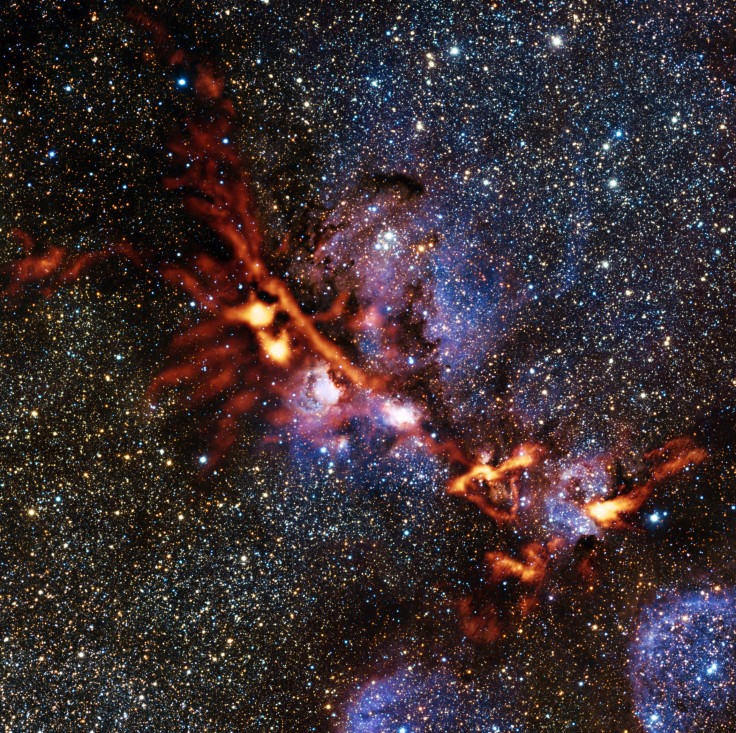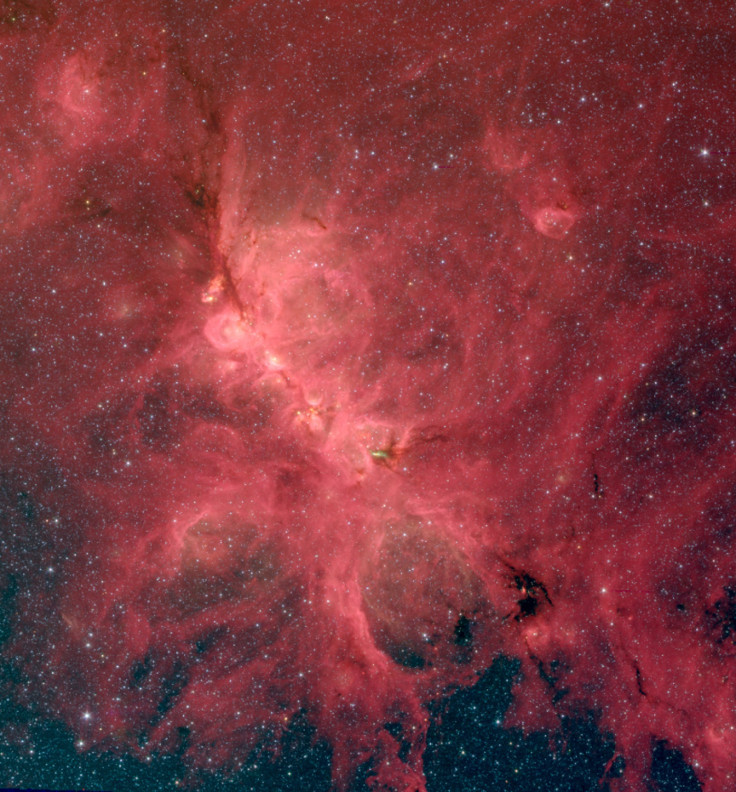Young Stars Light Up The Cat's Paw Nebula [PHOTO]
The Cat's Paw Nebula, or NGC 6334, is located in the constellation Scorpius, approximately 5,500 light-years from Earth and is undergoing a period of increased star formation activity. In a new image of the area, the Cat's Paw Nebula is practically glowing due to the young stars.

The latest image of the Cat's Paw Nebula is the result of some new technology that was recently installed in the European Southern Observatory's Atacama Pathfinder Experiment, or APEX, located in the Atacama Desert in Chile. The Architectures de bolomètres pour des Télescopes à grand champ de vue dans le domaine sub-Millimétrique au Sol, or ArTeMiS, camera was attached to the APEX telescope and can be used to observe star-forming regions in millimeter and sub-millimeter wavelengths, in the electromagnetic spectrum, notes ESO.
The sharper images will lead to new insights into star formation. Observing a star-forming region, like NGC 6334, is especially important considering the amount of activity that’s happening in the nebula. Previous observations of the Cat’s Paw Nebula reveal a “baby boom” period, according to researchers from the Harvard-Smithsonian Center for Astrophysics, or CfA. The nebula contains 2,000 young stars surrounded by a protoplanetary disk, a dense area of dust and gas, and thousands of other young stars.
According to the researchers, the Cat’s Paw Nebula has “about 200,000 suns' worth of material” combining to form new stars. NGC 6334 is forming stars at a more rapid pace than Orion -- so rapidly, in fact, that it appears to be undergoing what might be called a "burst of star formation,” lead author Sarah Willis, of CfA and Iowa State University, said in a statement.
It’s unclear why there is such a high level of star formation activity in NGC 6334; two common explanations, a nearby supernova or a collision between galaxies, have been ruled out by researchers. Future research efforts, using NASA’s Spitzer Space Telescope and the Blanco telescope at the Cerro-Tololo Inter-American Observatory used by the CfA or ArTeMiS, could lead to new insights into the mystery surrounding the Cat’s Paw Nebula’s recent burst of activity.

New tools, such as ArTeMiS and the Dark Energy Camera, are beginning the behave more like digital cameras, capable of producing sharper images, with much more pixel density, much faster than previously used methods. The electromagnetic spectrum range ArTeMiS operates in can cut through the dust and debris around young stars, giving astronomers a look at the radiation given off by these hot young stars.
© Copyright IBTimes 2024. All rights reserved.








